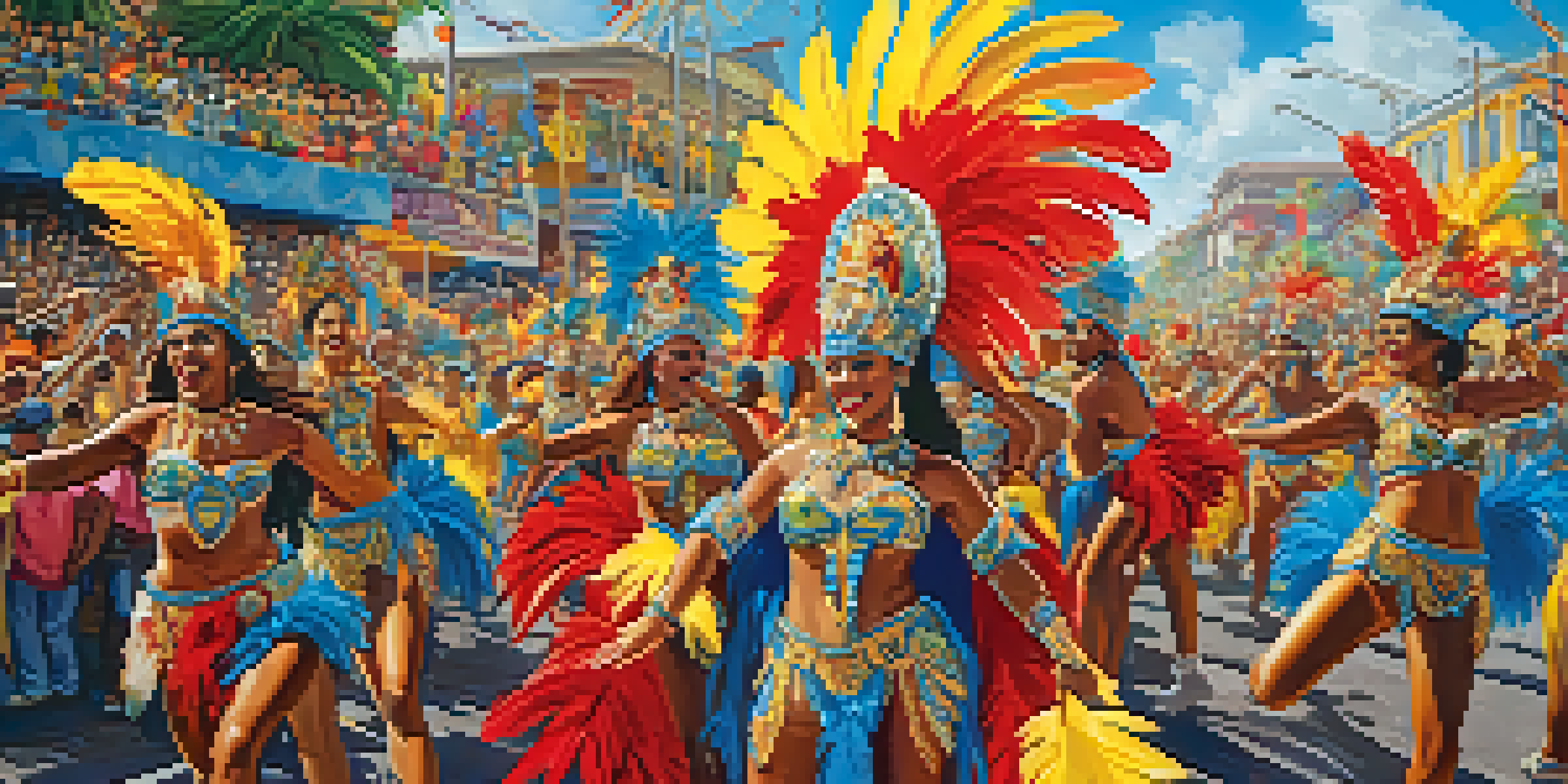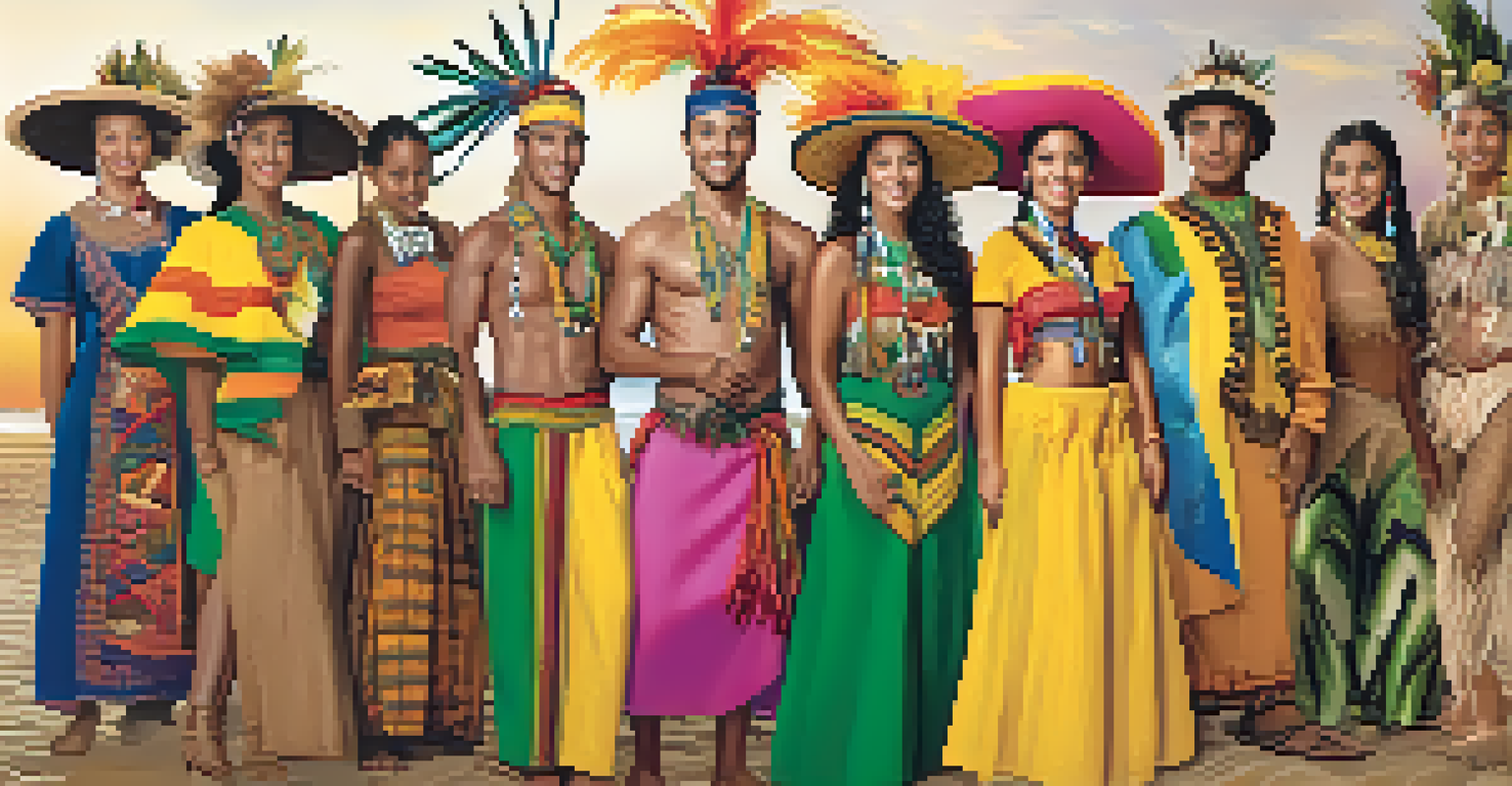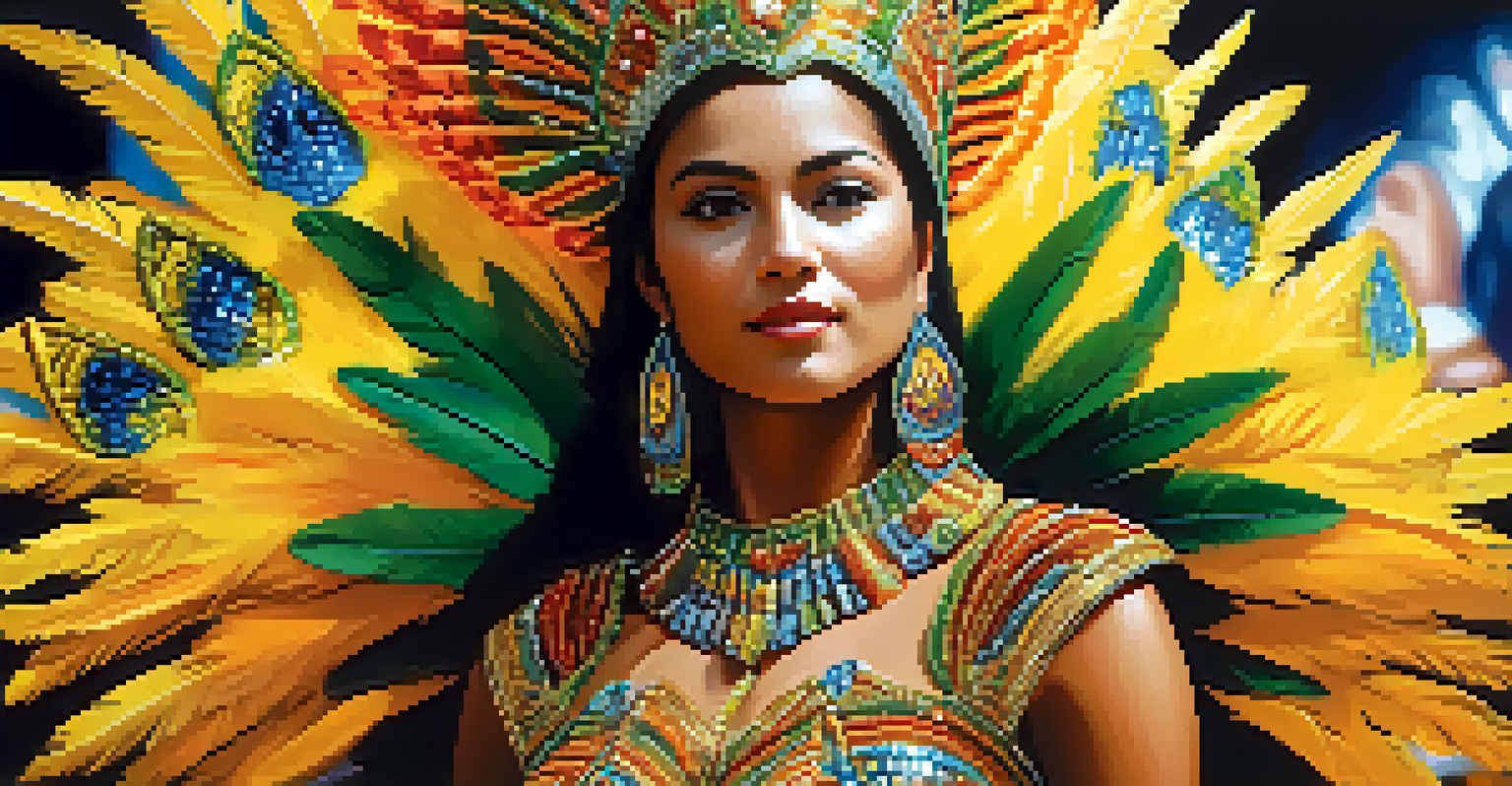Colors and Costumes: The Visual Splendor of Brazilian Festivals

The Heartbeat of Brazil: Festive Colors and Their Meanings
Brazilian festivals are a riot of colors, each hue telling its own story. For instance, the vivid reds and yellows often symbolize joy and celebration, while blues and greens can represent harmony and nature. These colors create a visual feast that resonates with the spirit of the people, drawing visitors from around the globe.
Colors are the smiles of nature.
During Carnival, you'll notice how the colors reflect the energy of the samba, a dance that pulses with life. Each dancer's costume is a canvas, splashed with bright colors that mirror the rhythm of the music. This vibrant palette not only captivates the eyes but also immerses everyone in the festival's exuberance.
Moreover, the meanings behind these colors are deeply rooted in Brazilian culture. Each festival, from Festa Junina to Parintins Folklore Festival, utilizes specific colors that connect to local traditions and history, making the visual experience even more profound.
Costumes: The Artistic Expression of Brazilian Identity
When you think of Brazilian festivals, the costumes are often the first thing that comes to mind. Elaborate outfits adorned with feathers, sequins, and beads create a stunning visual spectacle. These costumes are not just attire; they are a form of storytelling, representing the rich cultural tapestry of Brazil.

For example, the traditional costumes worn during Carnival are designed to be eye-catching and dynamic, reflecting the vibrancy of samba music. Each costume showcases the creativity and skill of local artisans, blending modern design with traditional motifs. This fusion not only celebrates heritage but also encourages a sense of community among participants.
Colors Reflect Brazilian Culture
The vibrant colors used in Brazilian festivals symbolize various aspects of joy, celebration, and cultural heritage, creating a visual feast that connects deeply with local traditions.
Additionally, the craftsmanship involved in creating these costumes is remarkable. Many are hand-made, taking months to complete, and often involve intricate beadwork or elaborate headdresses. This dedication to artistry highlights the importance of self-expression in Brazilian culture, making every festival a unique showcase of talent.
The Role of Samba Schools in Festival Fashion
Samba schools play a pivotal role in shaping the vibrant costumes seen during Carnival. These community organizations not only teach samba dancing but also design and create elaborate costumes for their members. Each school has its own unique style, contributing to the diverse visual landscape of the festival.
Fashion is the armor to survive the reality of everyday life.
The preparation for Carnival involves months of hard work, with designers and seamstresses collaborating to bring their visions to life. As the parade approaches, excitement builds, and the streets come alive with color. This collective effort fosters a sense of pride and belonging among participants, turning the festival into a true celebration of community.
In essence, samba schools are the heartbeat of Carnival, infusing the festival with creativity and collaboration. Their costumes tell the stories of neighborhoods, traditions, and the spirit of unity that defines Brazilian culture, making each parade a spectacular showcase of artistry.
Regional Variations: Costumes and Colors Across Brazil
Brazil is a vast country with diverse cultures, and this is beautifully reflected in the variations of costumes and colors across different regions. In the Northeast, for example, the vibrant colors of Festa Junina highlight rural traditions, featuring costumes that evoke the agricultural lifestyle. Each region's unique flair adds layers to the festive experience.
In contrast, the Amazon region showcases indigenous influences in its costumes, with earthy tones and traditional patterns that celebrate nature and spirituality. The Parintins Folklore Festival, in particular, features costumes that tell stories of the forest and its inhabitants, intertwining cultural heritage with visual storytelling.
Costumes as Cultural Storytelling
Elaborate costumes at festivals serve as artistic expressions of Brazilian identity, showcasing the creativity of local artisans and telling stories through intricate designs.
These regional differences not only enrich the festivals but also educate participants and visitors about Brazil's cultural diversity. Embracing these variations allows for a deeper understanding of the country's history and traditions, making every festival a journey through Brazil's colorful landscape.
Nature’s Palette: Inspiration from Brazil’s Landscapes
Brazil's landscapes are a treasure trove of inspiration for festival colors and costumes. The lush Amazon rainforest, with its vibrant greens and bursts of floral colors, often influences costume designs. This connection to nature reflects a deep respect for the environment and its beauty, which is celebrated during festivals.
The coastal regions, with their sandy beaches and turquoise waters, inspire lighter, breezier colors that evoke a sense of freedom and joy. These hues are often incorporated into Carnival costumes, reminding participants of the natural beauty surrounding them. The interplay between nature and festival attire creates a holistic experience that celebrates both culture and environment.
Ultimately, nature's influence on festival fashion fosters a sense of harmony between people and their surroundings. By drawing from the vibrant colors of the landscape, Brazilian festivals connect participants to their roots, making the experience even more meaningful.
The Evolution of Festival Fashion: Tradition Meets Modernity
As Brazilian festivals evolve, so does the fashion associated with them. While traditional elements remain, contemporary influences have begun to emerge, creating a fascinating blend of old and new. Designers are experimenting with materials, techniques, and styles, resulting in innovative costumes that still honor cultural heritage.
For instance, some designers incorporate sustainable materials into their costumes to promote environmental awareness. This shift reflects a growing understanding of the importance of sustainability in fashion, allowing festivals to remain relevant while celebrating their roots. This fusion of tradition and modernity creates a dynamic fashion scene that evolves with the times.
Samba Schools Foster Community Spirit
Samba schools play a crucial role in designing festival costumes and building a sense of community, bringing together participants to celebrate their shared cultural heritage.
Furthermore, with the rise of social media, festival fashion has gained global recognition. Influencers and designers showcase their creations online, inspiring a new generation to embrace Brazilian culture. This exposure encourages creativity and experimentation, ensuring that festival fashion continues to flourish in exciting and unexpected ways.
The Global Impact of Brazilian Festival Colors and Costumes
Brazilian festivals have transcended borders, inspiring global celebrations with their vibrant colors and costumes. Events like Rio Carnival have become synonymous with exuberance, attracting millions of visitors eager to experience the visual splendor. This international appeal showcases the power of color and creativity in bringing people together.
As other cultures adopt elements of Brazilian festival fashion, a beautiful exchange of ideas occurs. Designers worldwide draw inspiration from Brazil's aesthetic, incorporating bold colors and intricate designs into their own celebrations. This cultural exchange enriches the global festival landscape, fostering appreciation for diversity.

Ultimately, the impact of Brazilian festivals extends far beyond their borders. By sharing their visual splendor with the world, they not only celebrate their own heritage but also inspire unity and creativity among diverse cultures, proving that colors and costumes are a universal language of joy.